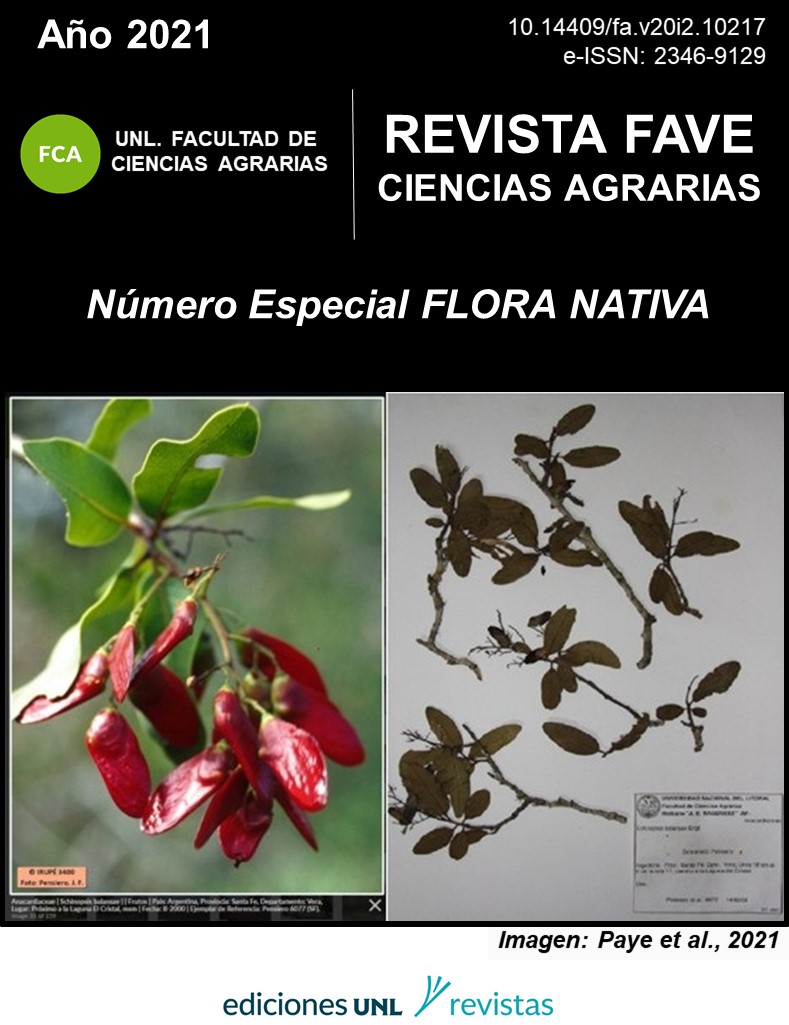Evaluation of two layering techniques for the vegetative propagation of algarrobo Prosopis chilensis (Mol) Stuntz.
DOI:
https://doi.org/10.14409/fa.v20i1.10272Keywords:
IBA hormone, substrates, layering seasonAbstract
The aim of this work was to evaluate two methods of vegetative propagation in P. chilensis: air layering (technique A) and by mound (B). For (A) trees of 3.5 years old were employed. The trial consisted in two treatments (IBA 1 % and control without hormone) applied in two seasons (spring-summer). For (B) 8-month-old plants were employed. The trial consisted in two treatments (plants wire ringed and without ring) and 3 different substrates as mound: sand, peat and a mixture of both. In technique A 42.5 % of rooted aerial layers were obtained in spring with AIB and an average of 14.5 roots per layer, with no differences compared to summer. In technique B the maximum rooting percentage was 75 % in the sand substrate with an average of 3.89 roots per layer. In A, it is concluded that IBA improved the rooting percentage in both seasons. In B, the wire ringing favored the rooting of the layers in mound with sand as substrate.

















